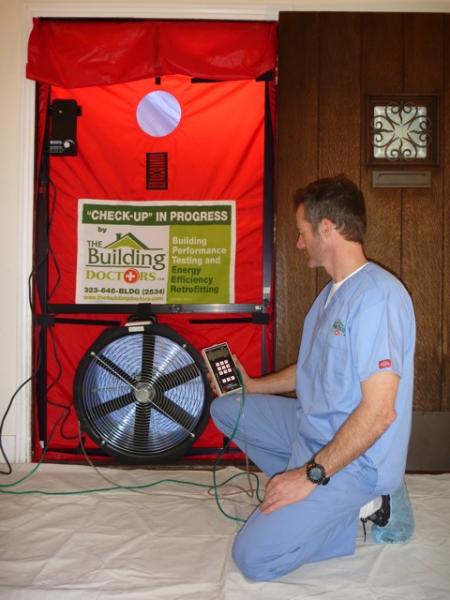
This test determines where there are air leaks in the building envelope. The Blower Door test involves fitting an adjustable fan inside a flexible nylon frame that's placed into an exterior door frame. The fan pulls the air out of the house, lowering the air pressure inside. The higher outside air pressure will gain access to the interior through unsealed cracks and openings (a process called infiltration), in places like door jams, window and floor moldings, and even recessed lighting fixtures. While the house is depressurized, we tour the house with a smoke puffer to find these holes in the building envelope. We document these sites in both written and picture form so they can be later identified for air sealing upgrades. The blower door fan is attached to a pressure gauge (Manometer), which measure airflow and the relative leakiness of a building. Air Changes per Hour (ACH) is a measurement of how many times the volume of air in a building leaves or enters the building, in one hour. We determine this by the fan pressure measurement and calculate cubic feet per minute (CFM) of airflow through the fan. Leakier houses have higher ACH's, and therefore higher cooling and heating expenses, and increased problems with comfort, indoor air quality, health, and moisture intrusion.
